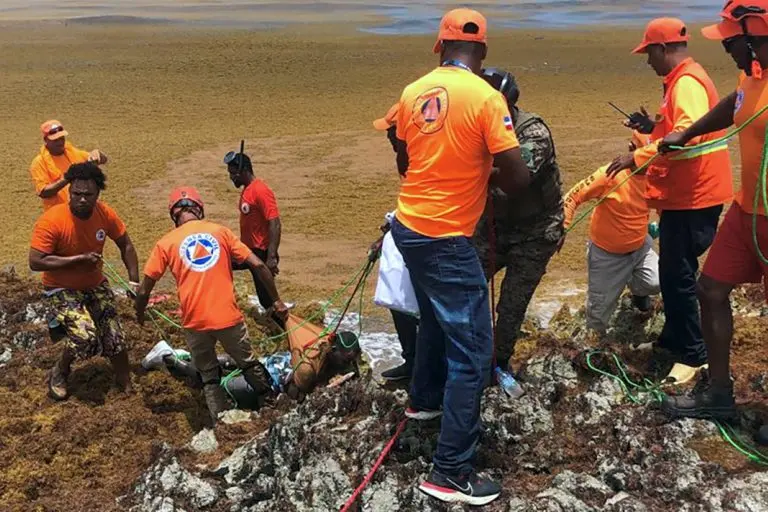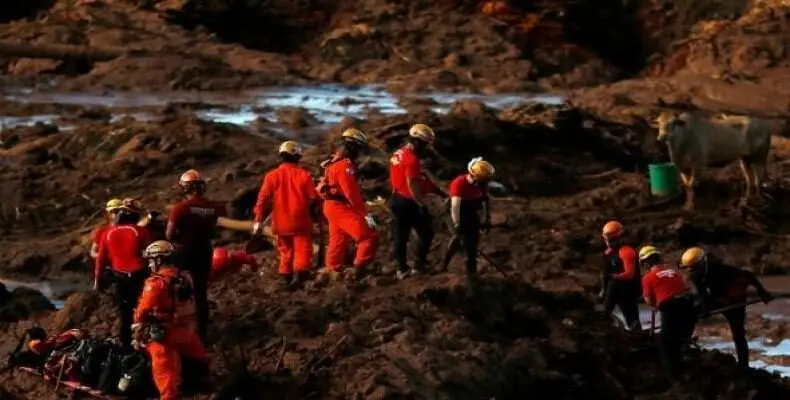Tragic 6 Dead in Dominican Republic Migrant Shipwreck Amid Rising Sea Dangers

Dominican Republic Civil Defense / AFP / 13/7/2025
July 13, 2025 Hour: 9:16 am
Six dead confirmed in Dominican Republic migrant shipwreck as search efforts continue. Rising sea dangers highlight risks of Caribbean migration routes amid ongoing humanitarian concerns.
Related: Federal Judge Blocks Trump’s Attack on Birthright Citizenship, Defends Immigrant Children’s Rights
Geopolitical Context Behind the Dominican Republic Migrant Shipwreck
The Dominican Republic migrant shipwreck, which claimed the lives of at least six people on July 13, 2025, is the latest in a series of deadly attempts by Caribbean migrants seeking better opportunities in Puerto Rico and beyond. The tragedy occurred near Playa Juanillo, La Altagracia, where a makeshift boat — known locally as a “yola” — capsized in rough seas, leaving families and authorities scrambling for answers and survivors.
This incident highlights the ongoing crisis of irregular migration across the Mona Channel, one of the most dangerous maritime routes in the Western Hemisphere. Despite repeated warnings from local authorities and human rights groups, hundreds of Dominicans and Haitians attempt the perilous crossing each year, driven by economic hardship, limited opportunities, and political instability.
🔗 IOM – Caribbean Migration Reports
Tragedy Strikes: Six Lives Lost at Sea
Playa Juanillo, La Altagracia, July 13, 2025 — The death toll has risen to six following a migrant shipwreck off the eastern coast of the Dominican Republic. Rescue teams from the Civil Defense and other emergency agencies have recovered the bodies and saved 17 others, two of whom remain hospitalized due to hypothermia and injuries sustained during the ordeal.
Fernando Castillo, director of Civil Defense in the province, confirmed that adverse weather conditions — including heavy surf, sargassum blooms, and reduced visibility due to Saharan dust — have hampered search operations.
“Today we increased the body count to six,” he told reporters, noting that the operation remains active as more individuals are still missing.
🔗 Civil Defense Official Statement
Desperate Journey Ends in Disaster
According to survivor testimonies, the overcrowded yola carried between 40 and 50 people, mostly Dominicans and Haitians, attempting an illegal crossing to Puerto Rico. Witnesses described harrowing scenes of chaos and despair as the boat capsized early Friday morning near Cap Cana.
“This was not just a boat trip. It was a gamble with death,” said one local journalist who visited the site shortly after the incident. “What we saw there was depressing and horrifying.”
Despite rapid response efforts, many passengers were trapped underwater or entangled in floating sargassum seaweed, significantly complicating recovery missions.
Authorities have yet to confirm the full list of identities or nationalities involved, but reports suggest both Dominicans and Haitian migrants were among those onboard.
The Deadly Reality of Caribbean Migration
The Dominican Republic migrant shipwreck once again underscores the life-threatening risks faced by thousands of people who attempt to cross the Mona Channel, a stretch of water separating the island of Hispaniola from Puerto Rico. Known for its strong currents and unpredictable weather, the channel has become a graveyard for many who see it as their only path to a better future.
Yolas — often poorly built, overloaded, and lacking basic safety equipment — are commonly used in these crossings. Human rights organizations have repeatedly warned about the dangers, calling for safer alternatives and stronger regional cooperation to prevent further loss of life.
Yet, as long as poverty and instability persist, experts warn, the flow of desperate migrants will continue.
Reactions and Calls for Awareness
The Dominican Republic migrant shipwreck has sent shockwaves through the country’s public discourse, reigniting debates over migration, inequality, and government responsibility.
Journalist Vargavila Riverón took to social media to urge caution, stating: “Trying to reach Puerto Rico on a yola is not the best option.” His post, which included images from the scene, sparked widespread discussion about the systemic issues driving such risky behavior.
Local authorities and civil society groups have also intensified outreach campaigns in coastal communities, warning against the dangers of clandestine voyages and urging citizens to denounce human trafficking networks profiting from desperation.
Rescue Efforts Continue

Search operations led by the Dominican Civil Defense and Navy are set to resume at first light on Sunday. While hopes of finding survivors are fading, officials have vowed to locate all missing persons before officially closing the mission.
Meanwhile, medical and psychological support is being provided to the rescued, while identification procedures are underway for the deceased.
The incident echoes similar tragedies in recent years, underscoring the urgent need for comprehensive policies addressing both the root causes of migration and the protection of vulnerable populations.
Regional Migration Crisis and Global Implications
This Dominican Republic migrant shipwreck is part of a broader trend affecting Latin America and the Caribbean. From the Darien Gap to the Florida Straits, unsafe migration routes continue to claim lives, exposing the failure of current systems to offer legal, safe, and dignified pathways for movement.
The United Nations and regional actors have called for coordinated efforts to address the socioeconomic factors pushing people into these journeys, as well as stronger protections for displaced populations.
As the world grapples with escalating displacement crises, this tragedy serves as a stark reminder: migration must be managed with humanity, not left to chance or exploitation.
Conclusion: A Call for Compassion and Policy Change
The Dominican Republic migrant shipwreck is more than a single event — it is a symptom of a larger, global challenge. As the death toll rises and the stories of survivors emerge, the international community faces renewed pressure to act.
Policymakers must work toward legal migration channels, improved economic prospects in vulnerable regions, and greater accountability for smugglers exploiting human suffering.
Until then, the sea will keep taking lives — and the world will keep watching.
Author: JMVR
Source: Agencias

